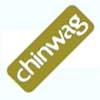Pioneers of Digital: TED Talk’s June Cohen on the Early Days of Online Video
Pioneers of Digital is a new book that tells the success stories behind people who have done amazing things on the web.
In the year or so it took us to write it, we interviewed twenty of the brightest minds in advertising, marketing, search and social media, documenting their career journeys (warts and all) and extracting these Pioneers’ reflections on their achievements, often for the very first time.
In this excerpt, June Cohen from TED reminisces about her early career at Stanford and Hotwired giving a fascinating account of the invaluable experience that end up leading to her help launch TED Talks on a myriad of digital devices and online platforms.
Immediacy of Video
One of the givens, Cohen remembers, of being a student at Stanford and living in California’s Silicon Valley is that you ‘breathe in technology along with the air.’ So in 1991, when computer giant Apple announced it was launching the video application QuickTime, she and her newspaper team sat in a pub after putting the day's issue of The Stanford Daily to bed, and imagined how this new multimedia tool could work for journalists.
Pre-web (internet browsing software had not been invented yet), they ‘started scribbling on cocktail napkins and getting very excited about the idea of delivering news over a personal computer and including not only text and photos, but also video,’ Cohen remembers. Over those few beers, they pondered the question: ‘What would happen if you could combine the immediacy of video and broadcast journalism with the in-depth reporting of newspapers?’
The potential they saw that night meant that, as the clock struck twelve, they had already decided to build one of the first multimedia publications.
Cohen assembled a team of writers, photographers, designers, filmmakers and computer programmers, and together they imagined what this new publication could be, and what content might suit it best. The publication was built using an application called HyperCard, and made available as a downloadable 'Special Edition over the Stanford University network. About eighteen months after the idea first sparked, the digital edition was featuring videos of Stanford athletes training for the Olympics along with news stories on the topic.
Crucially for Cohen, the experience exposed her to a whole new process and series of questions that would prove invaluable in her career:
'It was my very first collaboration with a programming team, and it got me thinking not only about storytelling and design, but also about technical architecture and how you could bring all those elements together to craft a new kind of news experience. It was a cross-disciplinary challenge: Programmers, designers and writers all think very differently -- and at that time, they had very little contact with each other -- but it was clear we needed all of those perspectives to succeed. I loved finding a way to bring everyone’s talents to bear.
'I was also so curious to see how the medium would evolve. Would it let us tell new stories in a new way? Or old stories in a new way? Would it change what it means to be a journalist? Would it change the nature of the newspaper? I was completely fascinated by these questions the first time they ever came to mind - in this bar in Palo Alto at in 1991. And I'm still interested in the same questions.'
With a thirst for a career in journalism, the bright lights and purring printing presses of New York seemed the obvious next move for Cohen after graduation, but the experience of launching the Stanford Daily's multimedia news meant she simply wasn’t interested in paper-based journalism anymore. ‘Once I worked on this project, I became enchanted by the idea of working in what we then called "multimedia." So that's what I decided to do.’
She started searching for a company that was ‘hiring people to work in this new emerging discipline.’
Thinking Differently
In 1994, Wired magazine announced the launch of a new digital publishing company called HotWired. Cohen became one of the first employees at the new venture, one of the first commercial web magazines. HotWired.com was unveiled on October 27 of that year. An early distinction: Cohen remembers it was the first website to carry banner ads, as well as the first site with a membership and commenting system built in:
We were the first website to use most of the new technologies that emerged. The founders of Wired were really visionary that way. They decided to throw resources against this new medium, and they committed really courageously to developing things that were experimental and native to the web. From the beginning, they encouraged us to think differently. Not just to think about what we would do on TV, or what we would do in a newspaper, or what we would do in a magazine, but to think about the web, and what actually works on the web.
Thinking about what works on the web has become a fundamental discipline that Cohen has kept with her throughout her career. Back in 1994, she says, there were some serious technological constraints on what you could actually build on the web. ‘We were constantly thinking about how to get around the limitations of the technology to deliver the experience that was waiting to be born.'
The book is available now on Amazon and Kindle: Pioneers of Digital: Success Stories from Leaders in Advertising, Marketing Search and Social Media
Mel Carson is founder of Seattle based digital consultancy Delightful Communications and his co-author is Professor Paul Springer is Head of Research at Buckinghamshire New University in the UK



